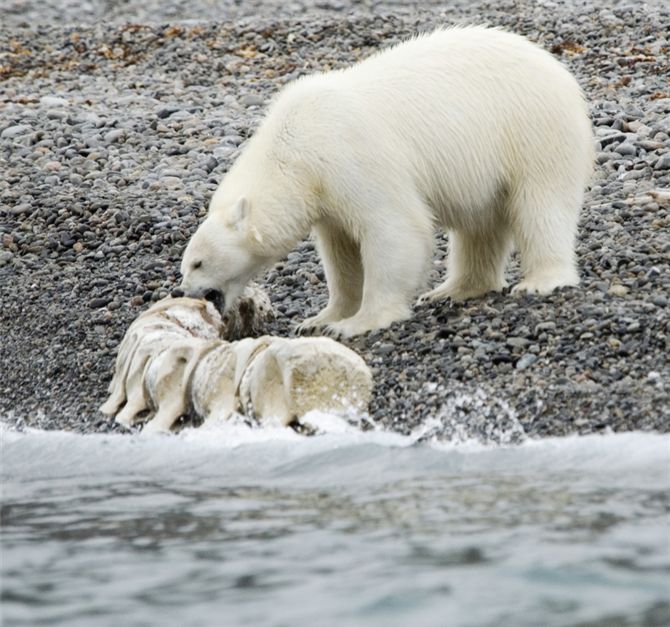 |
| Previous Image | Next Image |
| Description: POPs and heavy metals have been found in the blood and tissues of a disappointingly large number of wild species (Gamberg et al. 2005; Evans et al. 2005; Braune et al. 2005); however, documenting causal effects of these pollutants on aspects of population structure can be logistically difficult. It is in trying to meet criteria numbers 2 and 3 where desired scientific information comes into conflict with scientific ethics and the difficult logistics associated with field work in remote locations. As we discussed in chapter 1, experiments are very useful tools for determining the direct effects of a factor of interest. For example, if one wanted to understand the impacts of PCBs on polar bears, the scientifically cleanest approach would be a controlled experiment in which different individuals are exposed to different amounts of PCBs and the resulting changes measured. This is exactly the approach routinely used in toxicology labs, though typically centred on model species such as lab mice and rats. It is not a viable option for many wild species for a variety of reasons including naturally low population densities, where removing individuals for study could put the population at risk, many species' inability to thrive in captivity, and the extreme expenses associated with large-scale and long-term experiments. Instead, in the study of pollution in wild species a correlative approach is generally used, in which correlations are found between factors (such as PCB levels in individuals and their fertility) and causality is inferred. So what have ecologists learned about pollutants in northern and alpine populations over the last few decades? To address this issue we will focus on one well-studied and dramatic example, the polar bear, Ursus maritimus
Picture Stats: Views: 1264 Filesize: 86.81kB Height: 627 Width: 670 Source: https://biology-forums.com/index.php?action=gallery;sa=view;id=1814 |
